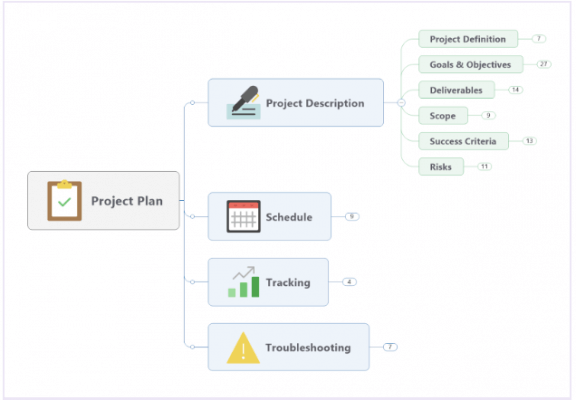3 Ways To Engage And Inspire Your Team
Communication and good listening are both ingredients of an engaged, enthusiastic workforce.

While employee engagement may seem like a buzzword these days, leaders and organisations who turn a deaf ear to it do so at their peril.
'Employee engagement' is mentioned so often that it may not even register on your radar screen anymore. A quick Google search of the term serves up millions of results. That much noise can be easy to tune out.
Yet all the talk about engagement is happening for a good reason, and leaders and organisations who turn a deaf ear to it do so at their peril.
The fact is, how engaged or disengaged your employees are can have an enormous impact on the success of your business. Gallup’s recent State of the Global Workforce report found that disengaged employees are costing organisations around the world $7 trillion annually.
Conversely, 2015 research by Aberdeen showed that companies with engaged employees see a 26 percent greater annual increase in revenue year-over-year. You probably have your own anecdotal evidence of productivity and performance suffering or improving, relative to engagement.
And just on a personal level, if you ask people whether they’d like to feel engaged with their job, I expect they’d all answer “yes.” Who wouldn’t prefer excitement over boredom and passion over indifference, for eight-plus hours a day?
To transform that inherent desire for engagement into everyday reality, leaders need to create the conditions that allow their team members to connect with, care about, and thrive in the work they do. Here are a few steps to start with:
Encourage ongoing feedback
One of the most significant things a leader can do to get her team members engaged is to actively seek out their feedback on the projects they’re involved with. Employees need to know that their feedback is not only welcome, but valued, relevant, and impactful.
The way we accomplish this at MindManager is by making meetings, brainstorms, and strategy sessions highly visual and interactive. Working with dynamic, shared visual maps and diagrams, participants can actually see their input integrated into the discussion topic.
Everyone can clearly understand how each idea relates to and impacts the big picture. And everything is documented, becoming part of the permanent project record.
This creates a very powerful sense of involvement and ownership for each individual. It also helps to strengthen team alignment. Everyone is on the literal same page, seeing the same plan and all the information related to it, which makes the project run much more smoothly.

Soliciting feedback shouldn’t be confined to isolated projects or team initiatives. NI Business offers a fantastic list of ideas for encouraging organisation-wide feedback, including internal newsletters, monthly questions and regular surveys. The more visual and visible these efforts are, the more participation they’ll drive, and the more engagement they’ll create.
Of course, if you ask, be prepared to act! When initiatives like these aren’t followed up with clear action by leadership, employees can quickly become frustrated.
Establish open lines of communication
Beyond public forums and project-specific scenarios, employees should also know that they can reach out to you directly to share thoughts and ideas, as well as concerns and challenges.
While plenty of businesses and leaders pay lip-service to this idea, employees can recognise when that’s all it is.
Leaders need to make the first move on the communication front. The onus is on them to establish a space where employees feel free to speak honestly, without fear of negative repercussions, and with the belief that they really are being heard.
That means actually listening, thinking deeply about what is being said, and responding to it with honesty – over and over again, until trust has been established.
Here again, incorporating a visual structure can enable and enrich the process. Something as simple as a sheet that tracks conversation topics, actions taken, and results (week to week or month to month), will demonstrate genuine concern and effort on both sides. It also acts as a great motivator for follow-through.
Not all ideas are feasible; not all conflicts and challenges can be eliminated. Most people understand that, and are OK with it. It’s the dialogue on these topics, sometimes even more than the outcomes, that will strengthen employees’ engagement.
Cater to different communication styles
The good old Golden Rule – do unto others as you would have them do unto you – has plenty of merit across all sorts of situations. But when it comes to engaging your employees, and communication in general, there’s a school of thought that suggests this age-old adage could actually work against you.
A better approach is what’s commonly known as the “Platinum Rule,” which proposes that you should treat someone the way they want to be treated. It’s a small shift in precious metals and pronouns, but it can make a huge difference in how your communications are received, interpreted, and acted on.
Are there clues that indicate an employee’s preferred communications style? Kahler Communications and their Process Communication Model says there is. Luckily, the clues are there, if you pay attention to how employees and colleagues communicate with you.
Maybe someone who gets right down to business in a meeting, and whose emails are typically short and direct, with bullets rather than paragraphs, would prefer her incoming communications structured the same way.
But that structure might be off-putting and alienating to a team member who always greets you with a warm hello and asks how your weekend was, before starting a work-related conversation. He likely appreciates that same personal touch in communications he receives.
Lead your conversations, emails and messages with each of your team members and colleagues in the way that reflects his or her own communication preferences – even if it doesn’t come naturally to you. It isn’t about being inauthentic.
It’s about being empathetic and letting people immediately know that they are heard and understood, which will, in turn, further break down barriers that prevent full engagement.
Like so many other things in life, getting employees excited and invested in their work comes down in large part to great communication. When you initiate conversations, listen actively, and show people that their voices matter, the benefits will reverberate across your business.
Michael Deutch serves as VP of Products for MindManager and ClearSlide at Corel. Michael is an expert in information visualization and the role it plays in fostering engagement and delivering breakthroughs for teams and companies.
Thanks for signing up to Minutehack alerts.
Brilliant editorials heading your way soon.
Okay, Thanks!

